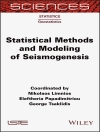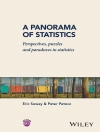This edited volume focuses on the latest developments in classification and data science and covers a wide range of topics in the context of data analysis and related areas, e.g. the analysis of complex data, analysis of qualitative data, methods for high-dimensional data, dimensionality reduction, data visualization, multivariate statistical methods, and various applications to real data in the social sciences, medical sciences, and other disciplines.
In addition to sharing theoretical and methodological findings, the book shows how to apply the proposed methods to a variety of problems — e.g. in consumer behavior, decision-making, marketing data and social network structures. Both methodological aspects and applications to a wide range of areas such as economics, behavioral science, marketing science, management science and the social sciences are covered.
The book is chiefly intended for researchers and practitioners who are interested in the latest developments and practical applications in these fields, as well as applied statisticians and data analysts. Its combination of methodological advances with a wide range of real-world applications gathered from several fields makes it of unique value in helping readers solve their research problems.
Table of Content
Chapter 1. Multilevel model-based clustering: A new proposal of maximum-a-posteriori assignment.- Chapter 2. Multi-citeria classifications in regional development modelling.- Chapter 3. Non-parametric latent modeling and network clustering.- Chapter 4. Efficient, Geometrically-adaptive Techniques for Multiscale Gaussian-kernel SVM Classification.- Chapter 5. Random forests followed by computed ABC analysis as a feature selection method for machine-learning in biomedical data.- Chapter 6. Non-Hierarchical Clustering for Large Data without Recalculating Cluster Center.- Chapter 7. Supervised Nested Algorithm for Classification based on K-means.- Chapter 8. Using Classification of Regions Based on the Complexity of the Global Progress Indices for Supporting Development in Competitiveness.- Chapter 9. Estimation Methods Based on Weighting Clusters.- Chapter 10. Five Strategies for Accommodating Overdispersion in Simple Correspondence Analysis.- Chapter 11. From Joint Graphical Display to Bi-Modal Clustering: [2] Dual Space Versus Total Space.- Chapter 12. Linear Time Visualization and Search in Big Data using Pixellated Factor Space Mapping.- Chapter 13. From Joint Graphical Display to Bi-Modal Clustering: [1] A Giant Leap in Quantication Theory.- Chapter 14. External Logistic Biplots for Mixed Types of Data.- Chapter 15. Functional clustering approach for analysis of concentration.- Chapter 16. Generalized additive models for the detection of copy number variations (CNVs) using multi gene panel sequencing data.- Chapter 17. Variable selection for classification of multivariate functional data.- Chapter 18. Initial value selection for the alternating least squares algorithm.- Chapter 19. Inference for General MANOVA Based on ANOVA-Type Statistic.- Chapter 20. How To Cross the River? – New ‘Distance’Measures.- Chapter 21. New Statistical Matching Method Using Multinomial Logistic Regression Model.- Chapter 22. Constructing graphical models for multi-source data: Sparse Network And Component analysis.- Chapter 23. Understanding Malvestuto’s normalized mutual information.- Chapter 24. Understanding the Rand index.- Chapter 25. Layered Multivariate Regression with Its Applications.- Chapter 26. An exploratory study on the clumpiness measure of intertransaction times: how is it useful for customer relationship management?.- Chapter 27. Data Quality Management of Chain Stores based on Outlier Detection.- Chapter 28. Analysis of expenditure pattens of virtual marriage households consisting of working couples synthesized by statistical matching method q.- Chapter 29. The Effects of Natural Disasters on Household Income and Poverty in Rural Vietnam: An Analysis Using the Vietnam Household Living Standards Survey.- Chapter 30. Generalizability of relationship between number of tweets about and sales of new beverage products.- Chapter 31. Cluster Distance-Based Regression.- Chapter 32. Bayesian network analysis of fashion behaviour.- Chapter 33. Determining the Similarity Index in Electoral Behavior Analysis: An Issue Voting Behavioral:Mapping.- Chapter 34. Well-Being Measures.- Chapter 35. The Relationship between Household Assets and Choice to Work: Evidence from Japanese Official Microdata.- Chapter 36. Visualization and Spatial Statistical Analysis for Vietnam Household Living Standard Survey.- Chapter 37. Changes in the Gendered Division of Labor and Women’s Economic Contributions within Japanese Couples.- Chapter 38. Employment structures vs. educational capital in the European Union regions.- Chapter 39. The IPUMS Approach to Harmonizing the World’s Population Census Data.- Chapter 40. A Supervised Multiclass Classifieras an Autocoding System for the Family Income and Expenditure Survey.-
About the author
Tadashi Imaizumi, School of Management & Information Sciences, Tama University, Tokyo, Japan
Akinori Okada, Rikkyo University, Toshima-ku, Japan Sadaaki Miyamoto, University of Tsukuba, Ibaraki, Japan
Fumitake Sakaori, Department of Mathematics, Chuo University, Tokyo, Japan
Yoshiro Yamamoto, Department of Mathematics, Tokai University, Kanagawa, Japan
Maurizio Vichi, Department of Statistical Sciences, Sapienza University of Rome, Roma RM, Italy












